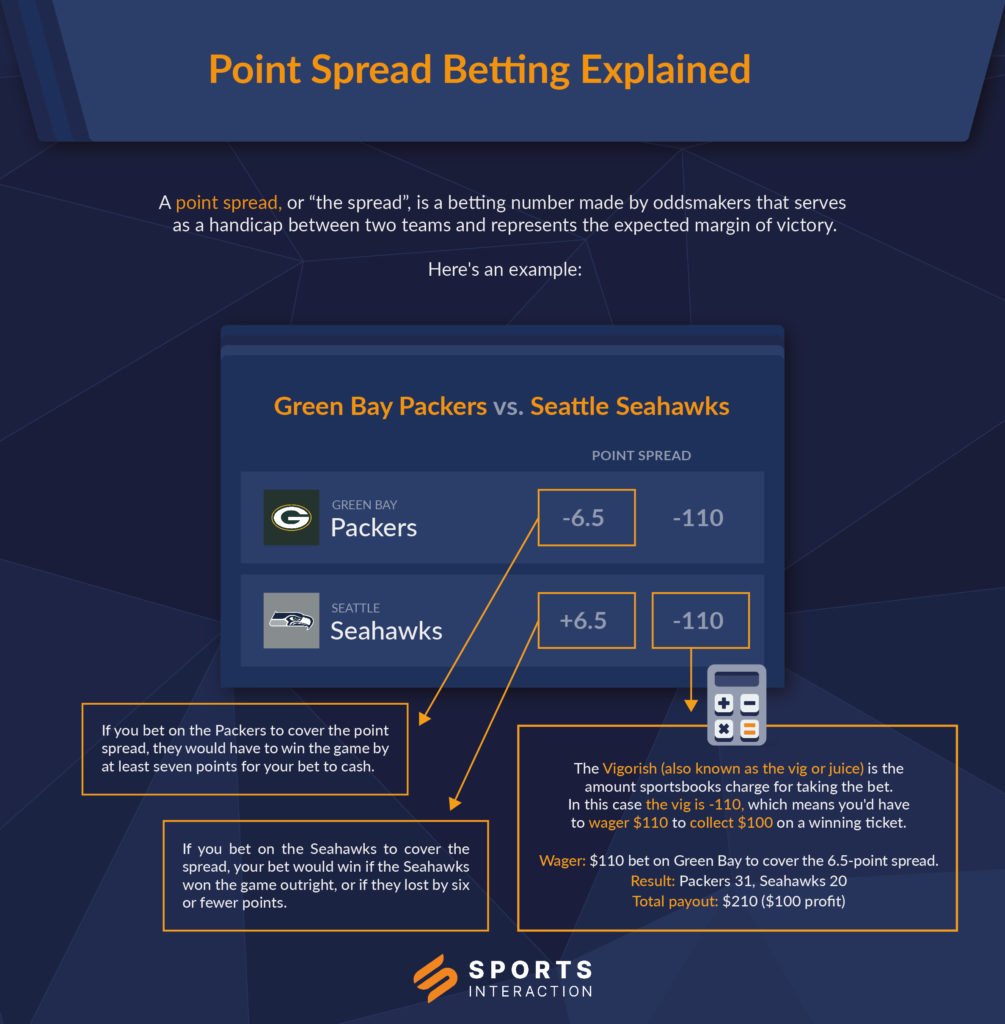Point Spread Betting Explained: Rules and Guidelines
Sports betting has been around since 1000 B.C in China, where betting on animal fights was commonplace. In ancient Rome, one could wager on the Gladiatorial games. The idea of betting on sports is as old as organized sport itself. But up until the 1940s, bettors were fairly limited in what kind of bets they could make. The standard system of odds would allow bets on, for example, the 3-1 odds that the Steelers would beat the Browns.
That was all before Charles McNeil, a math teacher from Chicago, invented the concept of the point spread. An avid gambler, McNeil created what he called “wholesaling odds” and started his own bookmaking operation in the 1940s. He started out offering this new style of betting on football, but his business model grew to include basketball. McNeil changed the way sports betting was done, and his legacy lives on today in what we now call the point spread.
What is a Point Spread and How Does it Work?
If you’re new to sports betting, you might find it daunting to bet on anything besides whether your team will win or lose the game. That kind of bet is called a moneyline bet or a fixed-odds bet, and it’s the very foundation of the wager, but is just the beginning in terms of how far you can take your sports betting game.
When you take a look at Sports Interaction’s NFL odds, you’ll see something like this:
The point spread, the first set of numbers you see above, is sometimes referred to as the “handicap”, is the number of points taken from the favorite, or given to the underdog, in order to open up the chances of either team winning the wager evenly. In most games, there’s usually a team that is more likely to win, based on a number of statistical factors. If the only kind of wager available was on who would win between a very strong team and a poor team, it wouldn’t be all that exciting. The point spread was designed to make betting much more interesting, since it allows a bet on the losing team to win you money. How? Let’s break down an example:
Green Bay Packers vs. Seattle Seahawks
Packers -6
Seahawks +6
In this example, we have a favorite to win, and an underdog. The Packers are the favorites, and that is shown by the (–) value in front of the 6. Underdogs are represented by the (+) value. The 6 point value is how many points either team could win, or lose by. If you think the Packers will win by MORE than 7 points, then you’d bet on the favorite in this case, meaning that the Packers have to win by 7 or more points in order for you to win your bet.
Perhaps you’re more confident that the Seahawks can either win the game or lose by less than 5 points. In that case you’ll want to place your bet on the underdog. If the final score is Packers 21, Seahawks 17 – the bet on the +6 point spread is a winning bet if you bet on the Seahawks.
Point Spread Tie Rules (Push)
If the Packers won the game by exactly 6 points, then it’s called a “push” and you would get your money back.
Oftentimes you’ll see a point spread that has a half-point added to the number. Of course, there’s no such thing as half a point in a football game, so why do we so often see point spreads with a (.5) attached to the score? Sportsbooks do this to make sure there isn’t a chance of a push. Let’s take another look at our game from above with the half point added.
Packers -6.5
Seahawks +6.5
In this case, if you bet on the Packers to win, and they win by 7, you win. If they win by 6, you lose. Same goes for a bet on the underdog. If the Seahawks lose by 7 points, you lose your bet, and if they lose by 6 points, you’ll win. The chance of a tie or “push” has been eliminated.
What does “Cover the Spread” and “Against the Spread” (ATS) Mean?
You may have heard the term “covering the spread” or the phrase “betting against the spread.” This means that if the favorite team wins an event with the point spread taken into account or that the underdog team wins with additional points, they have covered the spread. If the Packers win that game by more than 7 points, they have covered the spread.
Betting “against the spread” (ATS) just means you’re betting on the point spread in a particular matchup as opposed to the moneyline, or some other type of wager. Bettors often use a team’s ATS record to gauge its performance against the spread. For example, the New England Patriots were 11-5 ATS in the 2017 regular season, meaning they covered the posted point spread 11 times, and failed to cover five times.
Point Spread Payout Explained
Now that we know how the point spread works, let’s figure out how much money you’ll win (or lose.) When you bet on the spread of a game, you’ll see another number beside the numbers representing the point spread.
Packers -6.5 (-110)
Seahawks +6.5 (-110)
That (110) number tells you how much you have to bet in order to win $100. The vigorish – also known as vig or juice – is the price sportsbooks charge for making a bet. The most common vig used for each side of a wager is -110.
Let’s say you decide to bet $100 on the Packers to win by more 7 points and the final score is Packers 30, Seahawks 21. The Packers have won by 9 points, meaning they’ve covered the spread, and you’ve won the bet. The -110 means that your $100 bet will win you a total of $190. That total includes your original bet amount, so your total profit is $90.
Point Spread Examples
Here’s a closer look at how sportsbooks display the odds they offer. In the NFL and the NBA, the point spread is easily located, as well as the moneyline and the Over/Under betting options.
NBA Point Spread Explained
The same basic principles of point spread betting are the same in the NBA as they are in the NFL.
When you bet the point spread of a basketball game, you are betting on how many points the team is going to either win or lose by.
As with football, NBA point spread betting lines can be identified by their use of the (+) or (–) symbols.



